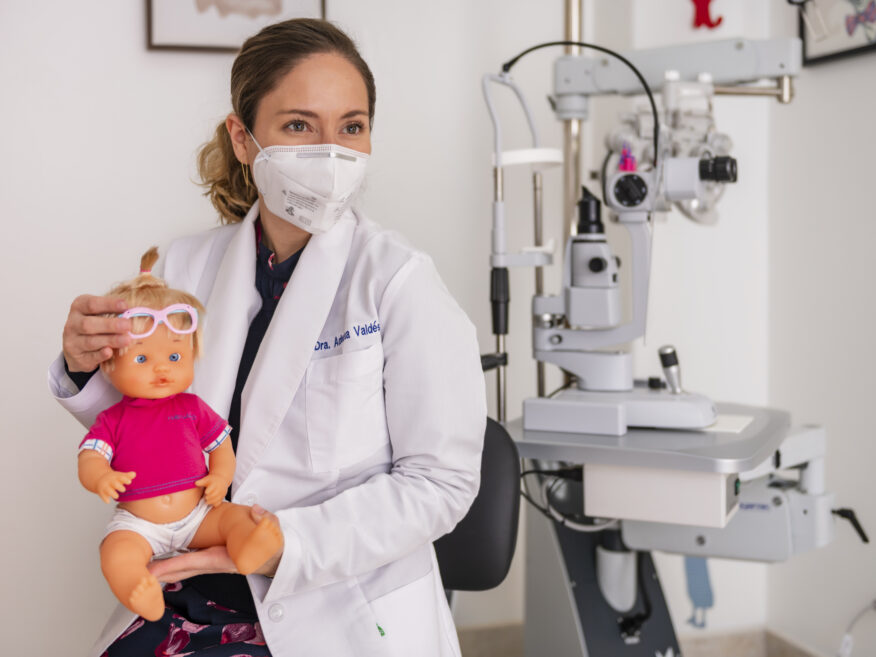Strabismus
Condition
Strabismus
Strabismus (crossed eyes) is a common eye condition among children. It is when the eyes are not lined up properly and they point in different directions (misaligned). One eye may look straight ahead while the other eye turns in, out, up, or down. The misalignment can shift from one eye to the other.
An Overview: Strabismus
At a Glance:
- Strabismus affects adults and children in different ways
- More common in children but adults can be affected too
- Parents may notice their children compensating by tilting their head or covering an eye
- Detrimental to normal binocular vision; can be more severe in adults
- May cause double vision, headaches, and eye strain
Strabismus is the term used to describe misaligned eyes. There are many types of Strabismus. If the eyes are crossed, it is called Esotropia. If the eyes turn outward, it is called Exotropia. In some cases, one eye can turn higher than the other. The higher eye is diagnosed with Hypertropia, while the lower eye is diagnosed with Hypotropia. The condition may be intermittent, constant, or it can alternate between the eyes. Cases of Strabismus can vary from mild to severe based on the amount of deviation between the eyes.
Strabismus affects adults and children in different ways. Symptoms of Strabismus in children are typically mild. Parents may notice that children tilt their head to one side to compensate or close and cover the deviating eye. Symptoms of Strabismus in adults may be more severe. Patients with this condition lose their binocular vision, which can cause double vision and loss of depth perception. As a result, patients may suffer from headaches or eye strain.
Strabismus Treatment
Strabismus Treatment Options Include:
- Glasses to correct any refractive error that may exist
- An eyepatch to help children strengthen a lazy eye
- Vision exercises
- Prism glasses
- Botulinum toxin treatment for eye muscles
- Strabismus surgery
The goal of Botulinum toxin treatment and Strabismus surgery is to align the eyes so that deviation is almost unnoticeable. These procedures should improve the visual function and cosmetic appearance of the eyes.
CODET only recommends surgery for appropriate candidates after a thorough, complete set of examinations and all other alternatives have been explored.

Why CODET for Strabismus Treatment?
- Highly trained surgeons. The chief of the Pediatric Ophthalmology and Strabismus Department is Strabologist, Dr. Adriana Valdes
- State-of-the-art diagnostic and surgical technology for Strabismus treatment
- Certified operating rooms
What is Strabismus?
A quick and easy look on strabismus.